Charming DIY Lamp Makeover Ideas for Your Home
Are you tired of the same old lamps cluttering your space, lacking personality and charm? Well, you’re in luck! Transforming your lamps into stunning decor pieces is easier than you might think. With a splash of creativity and a few simple DIY projects, you can breathe new life into those dusty old lamps sitting in the corner. Think of your lamps as blank canvases waiting for your artistic touch. Whether you want to go bold with colors or keep it subtle with chic fabrics, the possibilities are endless!
Imagine walking into a room where every lamp tells a story, reflecting your unique style and taste. It’s not just about light; it’s about making a statement. So, grab your tools, roll up your sleeves, and let’s dive into some exciting DIY lamp makeover ideas that will not only enhance your home decor but also spark joy every time you flip the switch!
Upcycling is all the rage, and for good reason! It’s a fantastic way to turn something old and forgotten into a beautiful centerpiece. You might have an old lamp that’s seen better days, but don’t toss it just yet! With a few innovative techniques, you can breathe new life into it. For instance, consider giving that lamp base a fresh coat of paint or adding some decorative elements like twine or beads. You can even create a stunning focal point by repurposing items around your home. Have an old vase? Why not turn it into a lamp base? The charm of upcycling lies in its ability to tell a story while being eco-friendly!
When embarking on a lamp makeover journey, the materials you choose are crucial for achieving that stylish and durable finish. Think about using high-quality paint that can withstand the test of time. Fabrics for lampshades can range from soft cottons to luxurious silks, depending on the vibe you’re going for. Don’t forget about embellishments! A few embellishments can transform a plain lamp into a work of art. Imagine using lace to cover a shade or metallic paint to give a base a modern twist. The right materials can truly elevate your lamp makeover.
Painting your lamp can be a game changer. There are numerous techniques to explore, such as spray painting for a smooth finish or stenciling for a more intricate design. If you’re feeling adventurous, why not try a two-tone effect? It’s like giving your lamp a fashionable outfit! Just remember to prep your lamp properly before painting; a clean surface will help the paint adhere better and look more professional.
Choosing the right color scheme is essential for making your DIY lamp a cohesive part of your home’s aesthetic. Think about the overall vibe of the room. Do you want something bright and cheerful, or soft and calming? Consider using a color wheel to help you find complementary colors. For example, a teal lamp can pop beautifully against a warm orange wall. Your lamp should not just be a source of light; it should harmonize with your decor, creating a seamless flow in your space.
After all the hard work, don’t forget the finishing touches! Applying a sealant or protective coating can ensure your lamp makeover lasts longer, maintaining its beauty through the years. It’s like giving your lamp a protective shield against dust and wear. Plus, it adds a professional finish that will make your lamp look as if it just came from a high-end store!
If you’re looking for a quick and impactful change, reupholstering or covering your lamp shades with fabric can do wonders. Choose a fabric that speaks to you—whether it’s a bold print or a soft pastel. The beauty of fabric is that it can easily be changed out seasonally, allowing your decor to evolve. It’s like dressing your lamp for the occasion! Just make sure to secure the fabric properly to avoid any mishaps when the lamp is lit.
Now that you’ve transformed your lamps, let’s talk about the lighting options that can enhance their beauty and functionality. A lamp isn’t just about aesthetics; it’s also about the ambiance it creates. Consider using energy-efficient bulbs that not only save you money but also reduce your carbon footprint. These bulbs come in various hues, allowing you to set the perfect mood for any occasion.
Switching to energy-efficient bulbs is a smart choice that benefits both your wallet and the environment. They last longer and use significantly less energy compared to traditional bulbs. Plus, they come in various styles, including warm and cool tones, so you can find the perfect match for your newly made-over lamp.
For those who love technology, integrating smart lighting solutions into your DIY lamp projects can add a layer of convenience and functionality. Imagine controlling your lamp with a simple voice command or adjusting the brightness from your smartphone! Smart bulbs can even change colors to suit your mood or the occasion. It’s like having a personal lighting assistant at your beck and call!
- Can I use any type of paint for my lamp makeover? It’s best to use paint that is specifically designed for the material of your lamp. For example, use spray paint for metal and fabric paint for lamp shades.
- How do I choose the right fabric for my lampshade? Consider the texture and pattern of the fabric. Make sure it complements your existing decor and is suitable for the lamp’s heat.
- Are energy-efficient bulbs worth the investment? Absolutely! They save money on energy bills and last much longer than traditional bulbs, making them a smart investment.
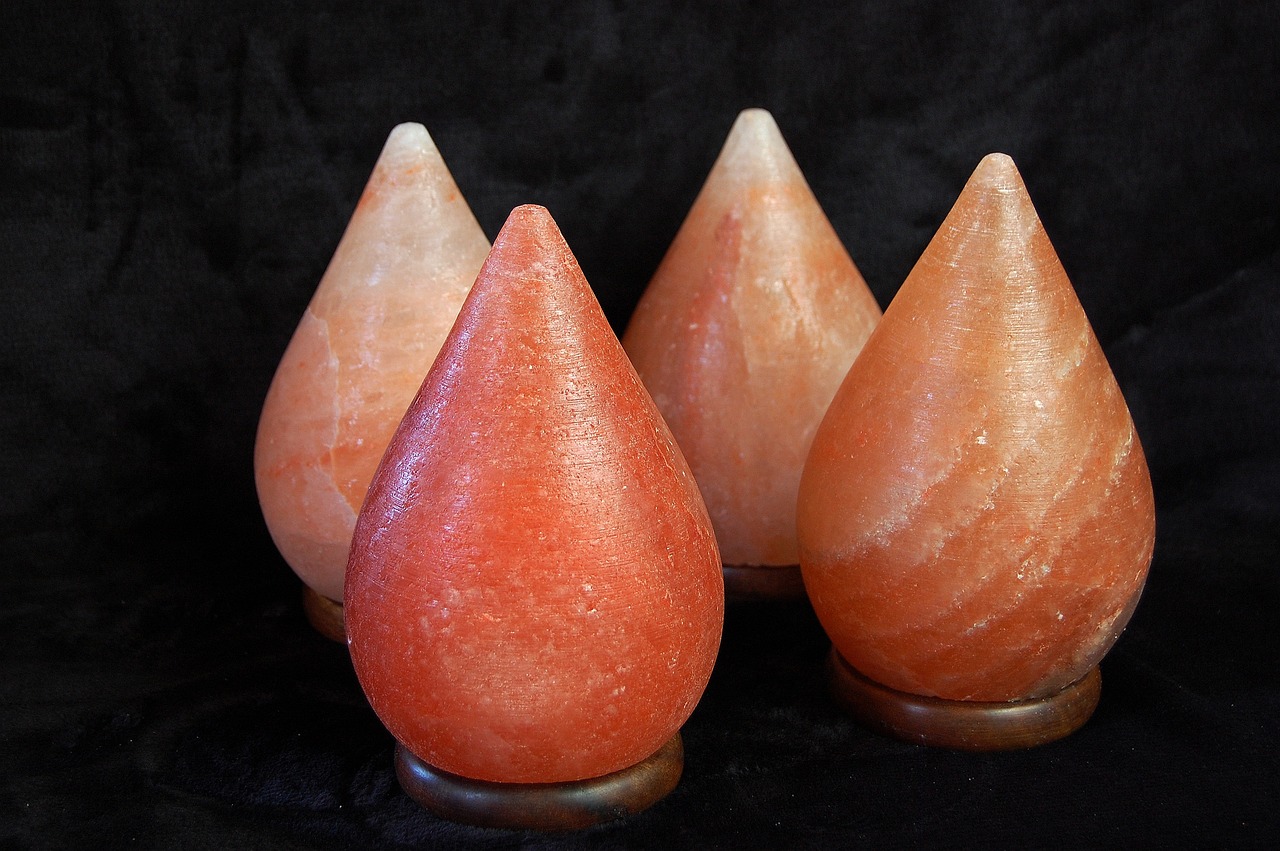
Upcycling Old Lamps
Have you ever looked at an old lamp and thought, "What a waste!"? Well, it's time to change that perspective! Upcycling old lamps is not just a fun DIY project; it's a chance to unleash your creativity and transform something outdated into a stunning centerpiece for your home. Imagine walking into a room and seeing a lamp that reflects your unique style, sparking conversations and admiration from guests. With a little imagination and some basic supplies, you can breathe new life into those forgotten pieces lurking in the corners of your home.
First off, let's talk about the potential of your old lamps. Many people assume that if a lamp is no longer in style, it’s destined for the trash. But hold on! The beauty of upcycling is that you can take that vintage charm and enhance it. For instance, consider a retro lamp with a unique shape. By simply changing its shade or applying a fresh coat of paint, you can make it a standout piece that adds character to your space. Think of it as giving your lamp a second chance at life!
One popular technique is to distress the lamp base. This method involves applying a layer of paint and then sanding it down in certain areas to create a weathered look. This not only gives the lamp a rustic charm but also makes it look like a treasured antique. Pair it with a bold, colorful lampshade, and you have a beautiful contrast that draws the eye. If you're feeling adventurous, you can even incorporate different textures—like adding twine or fabric to the base for a more tactile experience.
Another exciting avenue to explore is decoupage. This involves gluing decorative paper or fabric onto the lamp base or shade, creating a completely new design. You can use old book pages, colorful scrapbook paper, or even fabric remnants to add a personal touch. The key is to choose materials that resonate with you and your decor. This technique is not only simple but also allows for endless customization. Just imagine a lamp adorned with your favorite quotes or patterns—it’s like having a piece of art that also serves a functional purpose!
For those who love a little sparkle, consider adding embellishments. Think about using beads, sequins, or even small decorative items that can be glued onto the lamp shade or base. This can transform a plain lamp into a dazzling statement piece that reflects your personality. Remember, the goal is to create something that you love and that brings joy to your space. So, don’t be afraid to experiment and let your creativity shine!
In summary, upcycling old lamps is an exciting journey that allows you to express your creativity while being environmentally conscious. Not only do you save money by revamping what you already own, but you also contribute to a more sustainable lifestyle. So, gather those old lamps, roll up your sleeves, and start your transformation journey today! You’ll be amazed at how a little effort can turn something old and forgotten into a stunning focal point in your home.
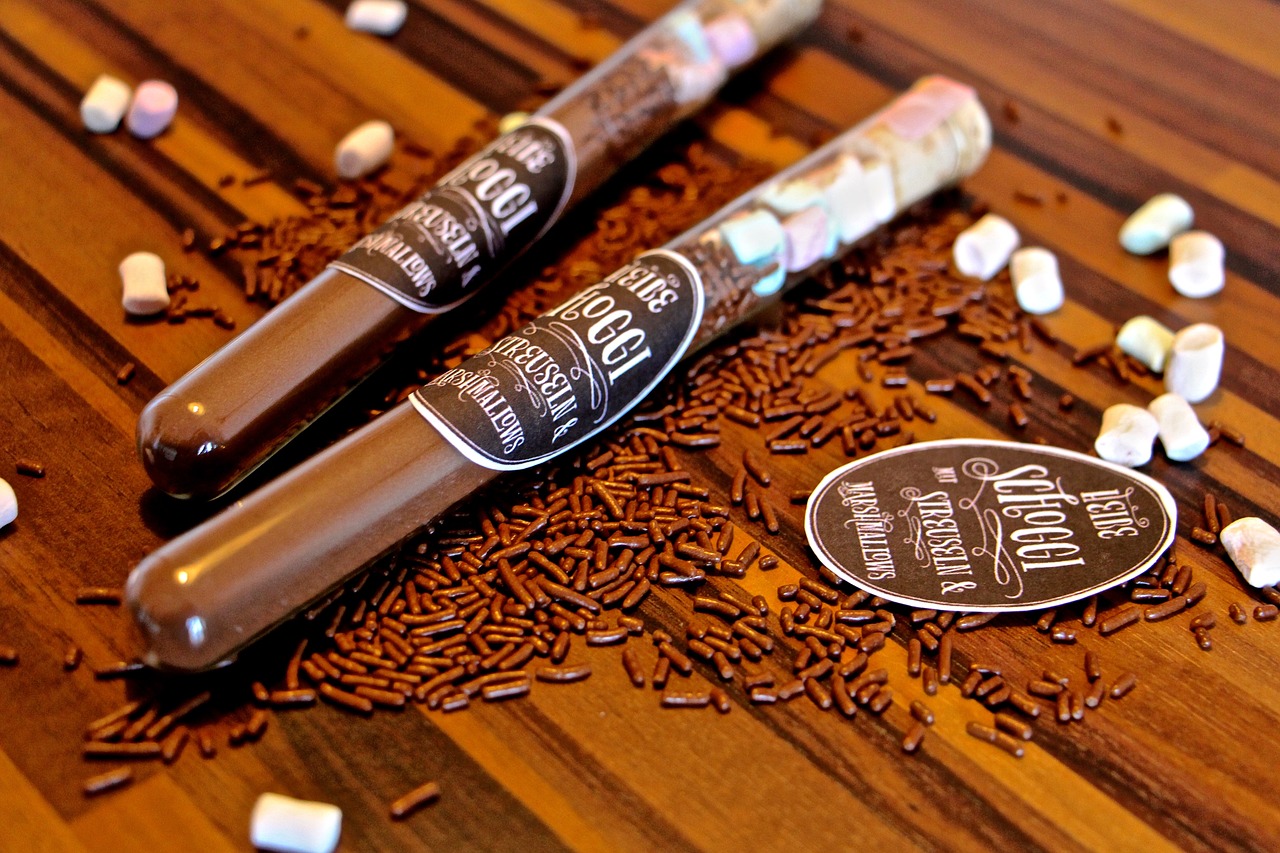
Choosing the Right Materials
When it comes to giving your lamps a stunning makeover, is crucial. The materials you select not only affect the overall aesthetic of your lamp but also its durability and functionality. Think of it as picking the right ingredients for a recipe; the better the ingredients, the tastier the dish! So, let's dive into the world of materials that can transform your old lamps into eye-catching decor pieces.
First off, paint is a game-changer. Whether you opt for a matte finish or a glossy sheen, paint can completely alter the look of your lamp base. For a quick and easy update, consider using spray paint. It’s fast, efficient, and allows for even coverage. If you’re feeling a bit more adventurous, stenciling can add a unique design element to your lamp. Imagine a floral pattern or geometric shapes that echo your personal style! Just be sure to use paint that is suitable for the material of your lamp base, whether it’s metal, wood, or ceramic.
Next, let’s talk about fabric. If you’re redoing a lampshade, fabric can make a world of difference. You can choose from a variety of textures and patterns to create a shade that complements your room’s design. For instance, a soft linen can add a touch of elegance, while a bold print can serve as a conversation starter. When covering a lampshade, consider using adhesive fabric or even a staple gun for a tight fit. Don’t forget to line the inside of the shade with a light-colored fabric to enhance the glow of the lightbulb!
In addition to paint and fabric, embellishments can take your lamp from ordinary to extraordinary. Think about adding decorative elements like beads, ribbons, or even mosaic tiles to your lamp base or shade. These little details can add a pop of personality and charm. Just remember to keep the embellishments in line with your overall design theme to avoid a cluttered look.
To help you visualize the materials you might consider, here’s a simple table summarizing some popular options:
| Material | Best For | Tips |
|---|---|---|
| Paint | Lamp bases | Use spray paint for even coverage |
| Fabric | Lampshades | Choose patterns that match your decor |
| Embellishments | Both bases and shades | Keep it cohesive with your design theme |
Finally, it’s essential to think about the finishing touches. After you've painted or covered your lamp, applying a protective sealant can ensure that your hard work lasts. This is especially important for lamps that will be exposed to light and heat, as it helps prevent fading and wear. So, before you plug in your newly made-over lamp, take a moment to consider these finishing touches for a long-lasting result.
In summary, the right materials can make all the difference in your DIY lamp makeover. From paint to fabric and embellishments, each choice you make adds to the charm and character of your creation. So, roll up your sleeves, get creative, and let your personality shine through your beautifully transformed lamps!
- What type of paint is best for lamp makeovers? Spray paint is often the easiest and most effective choice for even coverage.
- Can I use any fabric for lampshades? Yes, but make sure it’s light-filtering to ensure proper illumination.
- How do I ensure my embellishments stay on? Use strong adhesives or a hot glue gun for a secure hold.

Paint Techniques
When it comes to giving your lamps a fresh new look, can be your best friend. Whether you're looking to create a bold statement piece or a subtle accent, the right paint technique can transform your lamp from drab to fab in no time. One of the most popular methods is spray painting, which allows for a smooth, even finish without the brush strokes that can sometimes mar a project. It’s quick, easy, and can be done in a variety of colors to match your decor. Just make sure to work in a well-ventilated area and use a drop cloth to protect your surfaces!
Another fantastic technique is stenciling. This method adds a touch of artistry and can be customized to fit any theme or style you desire. You can create intricate patterns or simple designs that can really make your lamp stand out. To stencil, you’ll need a stencil of your choice, some painter's tape, and a small brush or sponge. Position the stencil on your lamp, secure it with tape, and gently dab your paint over the stencil. Remove the stencil carefully to reveal your masterpiece!
For those who love a more textured look, consider using a technique called distressing. This involves painting your lamp in a base color and then lightly sanding the edges or using a dry brush technique with a contrasting color to give it a weathered, vintage feel. It’s perfect for creating a rustic charm that can fit seamlessly into any home decor.
Here’s a quick overview of some popular paint techniques you can try:
- Spray Painting: Fast and smooth finish.
- Stenciling: Custom designs for a personal touch.
- Distressing: Achieve a vintage, worn look.
- Sponging: Create a soft, textured effect.
Lastly, don’t forget about color choices. The paint you select can completely change the vibe of your lamp. Bright, vibrant colors can energize a space, while softer, muted tones can create a calming atmosphere. Consider the overall color scheme of your room and choose hues that complement or contrast beautifully with your existing decor. Remember, the goal is to create a cohesive look that enhances your home’s aesthetic.
In conclusion, experimenting with different paint techniques can be a fun and rewarding process. Whether you opt for a sleek spray paint finish or a charming distressed look, your DIY lamp makeover will surely add a unique touch to your home. So grab your paintbrushes and unleash your creativity!
Q: Can I use any type of paint on my lamp?
A: It's best to use paint that is suitable for the material of your lamp. For metal lamps, spray paint or acrylic paint works well, while fabric lampshades can be painted with fabric paint.
Q: How do I prepare my lamp for painting?
A: Start by cleaning the lamp thoroughly to remove dust and grease. For lamps with a glossy finish, lightly sand the surface to help the paint adhere better.
Q: What type of sealant should I use after painting?
A: A clear acrylic sealant is a great choice to protect your paint job and give it a nice finish. Make sure it’s compatible with the type of paint you used.
Q: Can I paint over a lamp that has already been painted?
A: Yes! Just ensure that the previous paint is in good condition. If it’s peeling or flaking, it’s best to sand it down before applying a new coat.

Color Schemes
Choosing the right color scheme for your DIY lamp makeover is not just about aesthetics; it's about creating a harmonious flow in your home. Imagine walking into a room where the lamp's colors dance in sync with the walls, furniture, and decor. It’s like a beautiful symphony, where every element plays its part perfectly. So, how do you achieve this? First, consider the existing colors in your space. Are your walls painted in warm, inviting tones, or do they lean more towards cool, calming hues? Understanding this will guide you in selecting colors that either complement or contrast effectively.
One effective method to find your ideal color palette is to use the color wheel. This handy tool can help you visualize combinations that work well together. For instance, if your room features a lot of blues and greens, you might want to consider warm colors like oranges or yellows for your lamp to create a vibrant contrast. On the other hand, if your decor is already bold and colorful, a more neutral lamp might be just the ticket to pull everything together without overwhelming the senses.
Moreover, don’t shy away from experimenting with trendy color schemes. Here are a few popular combinations that can inspire your lamp makeover:
- Monochromatic: Using varying shades of a single color can create a sophisticated and cohesive look.
- Analogous: Select colors that are next to each other on the color wheel, like blue and green, for a serene vibe.
- Complementary: Pair colors that are opposite each other on the wheel, such as blue and orange, for a striking contrast.
- Triadic: Choose three colors that are evenly spaced around the color wheel for a balanced yet vibrant palette.
Lighting plays a crucial role in how colors appear. A lamp that looks stunning in daylight may take on a different character when illuminated at night. Therefore, consider testing your chosen colors under different lighting conditions before committing to the final design. You might find that a color you initially loved looks entirely different when the lamp is turned on! This is where samples come in handy. Paint a small section of your lamp base or cover a part of your lampshade to see how it interacts with your room's light.
Lastly, don’t forget about the finishing touches. Sometimes it’s the little details that elevate your lamp from ordinary to extraordinary. Think about adding patterned washi tape, decorative trim, or even a subtle glaze to enhance your color choice. These elements can add depth and interest, making your lamp not just a light source but a true statement piece in your home.
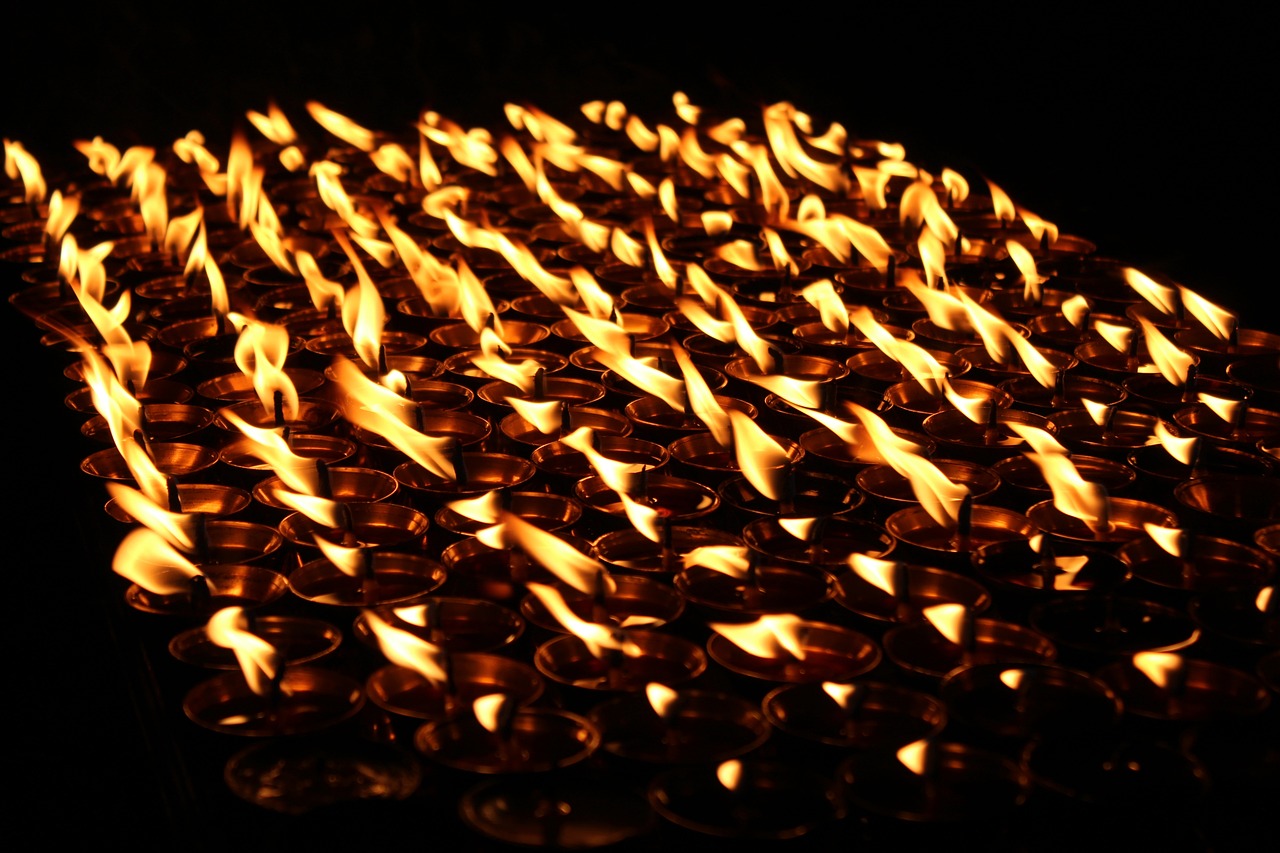
Finishing Touches
When it comes to giving your DIY lamp makeover that final *wow* factor, the are crucial. These details not only enhance the overall look but also ensure that your lamp will stand the test of time. Think of these touches as the cherry on top of a delicious sundae; they elevate the entire experience. One of the first things to consider is applying a quality sealant or protective coating. This step is essential, especially if you've used paint or fabric, as it protects your hard work from wear and tear, dust, and accidental spills. A good sealant will also enhance the colors, making them pop even more!
Additionally, consider the texture of your lamp. A matte finish can give a modern, sleek look, while a glossy finish can add a touch of elegance and sophistication. You might even want to experiment with different textures to create a unique look that resonates with your personal style. For example, using a matte sealant on a metallic paint can add depth and interest.
Don't forget about the bulb choice and how it complements your lamp's aesthetic. Pairing your beautifully revamped lamp with the right bulb can completely change its vibe. A warm, soft light can create a cozy atmosphere, while a bright white light is perfect for tasks. Remember, the right bulb is like the perfect soundtrack to a movie; it sets the mood and enhances the overall experience.
Lastly, think about where your lamp will sit. The surrounding decor can significantly impact how your lamp is perceived. Ensure that it harmonizes with the other elements in the room. You can even add small decorative items around the base of the lamp, like pebbles or small plants, to create a cohesive look. This way, your lamp becomes not just a light source but a stunning centerpiece that draws the eye and sparks conversation.
- What type of sealant should I use for my DIY lamp?
Choose a sealant that is compatible with the materials you've used. For painted lamps, a clear acrylic spray or a polyurethane sealant works well. For fabric, consider a fabric protector spray.
- How can I ensure my lamp stays clean?
Regular dusting with a soft cloth is essential. If your lamp has fabric, you might want to use a lint roller for quick clean-ups.
- Can I change the bulb type later?
Absolutely! Just make sure the lamp's socket is compatible with the new bulb type you wish to use.

Fabric Lamp Shades
When it comes to giving your lamps a fresh and modern look, are a fantastic option that allows for creativity and personalization. Imagine transforming a plain, uninspiring lamp into a stunning piece that complements your decor perfectly! The beauty of fabric shades lies in their versatility; you can choose from a myriad of patterns, colors, and textures to suit your style. Whether you want to go bold with vibrant prints or keep it subtle with soft pastels, the choice is yours.
One of the most exciting aspects of working with fabric is the opportunity to reupholster existing shades. This DIY project can be as simple or intricate as you desire. Start by selecting a fabric that resonates with your home’s theme. For example, if your interior is filled with rustic charm, consider using burlap or linen. On the other hand, if you lean towards a more contemporary vibe, sleek cotton or even velvet can do wonders. Don't forget to gather your tools, which typically include fabric, scissors, a hot glue gun, and possibly a staple gun for a more secure fit.
To reupholster a lamp shade, follow these steps:
- Remove the old fabric: Carefully take off the existing fabric, ensuring you don’t damage the lamp shade frame.
- Cut the new fabric: Measure and cut your new fabric, allowing for extra material to wrap around the edges.
- Attach the new fabric: Use your glue or staples to secure the fabric in place, making sure it’s taut and smooth.
- Finishing touches: Trim any excess fabric and add decorative elements like trims or ribbons for a polished look.
Beyond reupholstering, you can also cover existing shades with fabric. This technique is particularly useful if you want to add a pop of color without the hassle of removing the old fabric. Simply wrap the fabric around the shade, securing it with glue or tape. This method is quick and allows for easy changes in the future, letting you switch up your decor with the seasons.
Don’t overlook the importance of lighting when working with fabric shades. The type of fabric and its color will significantly affect the quality and warmth of the light emitted. Lighter fabrics tend to diffuse light more softly, creating a warm ambiance, while darker fabrics can create a more dramatic effect. Consider the mood you want to set in each room when choosing your fabric.
Lastly, remember that your lamp shade is not just a functional item; it’s also a piece of art that reflects your personality. By experimenting with different fabrics and styles, you can create unique lamp shades that become conversation starters in your home. So, roll up your sleeves, unleash your creativity, and let your lamps shine in a whole new light!
Q: Can I use any type of fabric for my lamp shades?
A: While you can use a variety of fabrics, it’s best to choose materials that are heat-resistant and won’t easily catch fire. Cotton, linen, and polyester blends are generally safe options.
Q: How do I clean my fabric lamp shades?
A: Cleaning fabric lamp shades can be done with a soft brush or a lint roller to remove dust. For stains, spot cleaning with a mild detergent and water is recommended. Always check the fabric care instructions first.
Q: Are fabric lamp shades more difficult to make than other types?
A: Fabric lamp shades can be more challenging than simple paper or plastic ones, but with patience and the right tools, they can be quite manageable. Plus, the results are often well worth the effort!

Lighting Options
When it comes to enhancing your home decor, lighting is often the unsung hero. It's not just about illuminating your space; it's about creating an atmosphere that resonates with your personal style. Think of your DIY lamp as a canvas, where the right lighting options can transform a simple piece into a statement of elegance and warmth. But how do you choose the right lighting to pair with your newly made-over lamps? Let's dive into some exciting options!
First off, consider the type of bulb you want to use. Traditional incandescent bulbs have their charm, but they can be energy hogs. Instead, you might want to explore energy-efficient bulbs, which not only save you money on your electricity bill but also reduce your carbon footprint. For instance, LED bulbs last significantly longer than their incandescent counterparts and come in a variety of colors and brightness levels. Imagine being able to change the mood of your room with just a flick of a switch!
Moreover, the color temperature of the bulbs you choose can dramatically affect the ambiance. Bulbs are available in various color temperatures, typically measured in Kelvins (K). Here’s a quick breakdown:
| Color Temperature (K) | Effect |
|---|---|
| 2700K - 3000K | Warm white, cozy and inviting |
| 3500K - 4100K | Neutral white, balanced and modern |
| 5000K - 6500K | Cool white, bright and energizing |
Choosing the right color temperature is like picking the perfect outfit for a special occasion; it sets the tone for the entire room. If you're aiming for a warm, cozy feel, stick with the lower Kelvin ratings. On the other hand, if you want a more energetic and vibrant atmosphere, opt for the higher ratings.
Another exciting option to consider is smart lighting solutions. Imagine controlling your lamp with just your voice or smartphone! Smart bulbs can be integrated into your DIY projects, allowing you to adjust brightness, color, and even set schedules for when your lights turn on and off. This not only enhances convenience but also gives you the flexibility to change the mood of your space instantly. It's like having a personal lighting assistant at your beck and call!
As you explore these lighting options, remember that the ultimate goal is to create a space that feels uniquely yours. Whether you prefer the warm glow of traditional bulbs or the modern twist of smart lighting, your choices will reflect your personality and style. So, go ahead and experiment! Mix and match different bulbs and colors to see what resonates with your vision. After all, your home should be a reflection of you!
Q: What type of bulb is best for a DIY lamp?
A: It depends on your needs! LED bulbs are highly recommended for their energy efficiency and longevity. They also come in various color temperatures to suit your style.
Q: Can I use smart bulbs in any lamp?
A: Yes, as long as the lamp's socket is compatible with the smart bulb's base. Just make sure to check the wattage and specifications!
Q: How can I change the color of my lamp's light?
A: You can use colored LED bulbs or smart bulbs that allow you to change colors via an app. This is a fun way to customize your lighting for different occasions!
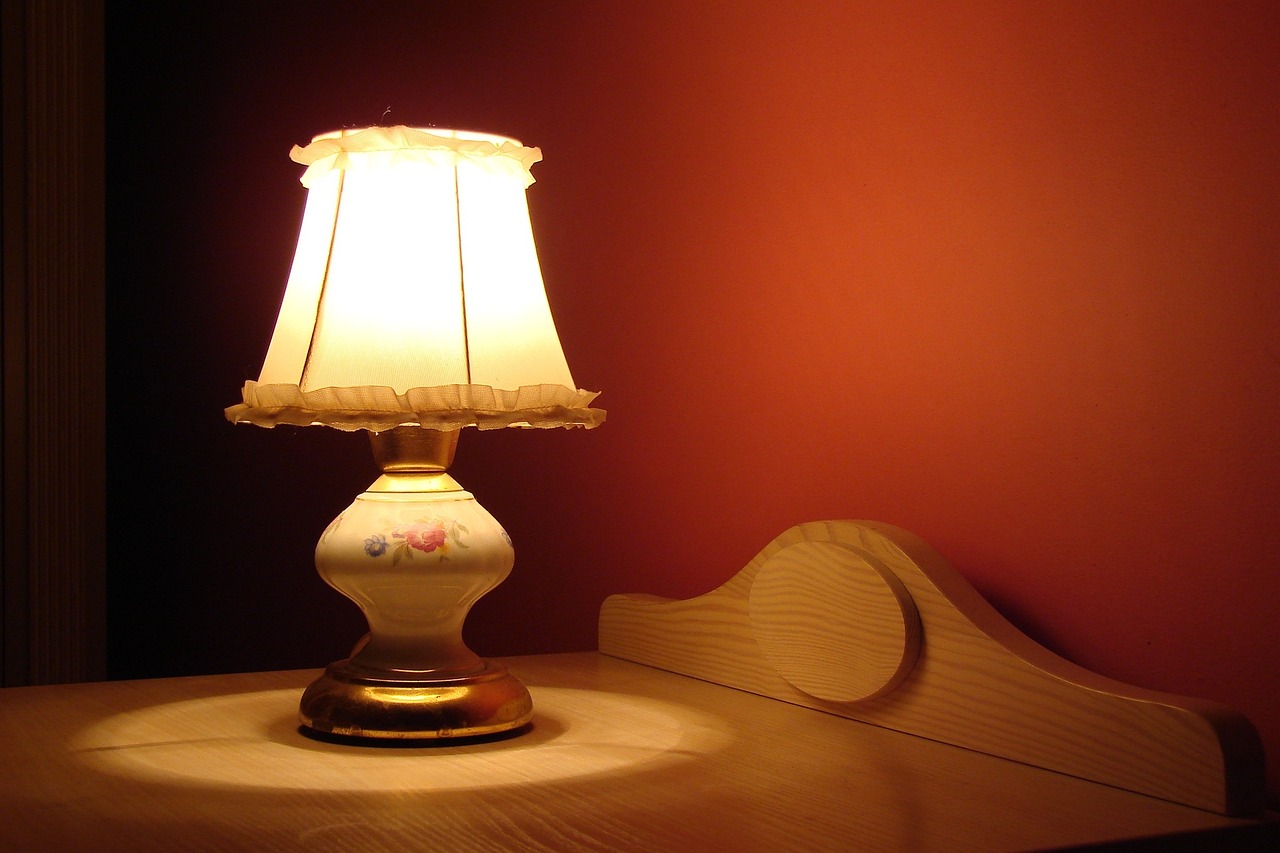
Energy-Efficient Bulbs
When it comes to lighting your beautifully revamped DIY lamps, choosing the right bulbs is just as crucial as the design itself. Enter —the unsung heroes of modern lighting! Not only do they illuminate your space, but they also help you save money and reduce your carbon footprint. Isn't that a win-win? Imagine basking in the warm glow of a lamp that not only looks stunning but also contributes to a greener planet!
So, what makes energy-efficient bulbs so special? For starters, they consume significantly less electricity compared to traditional incandescent bulbs. In fact, energy-efficient options like LEDs and CFLs can use up to 80% less energy. This means you can light up your home without feeling guilty about skyrocketing electricity bills. Plus, these bulbs have a longer lifespan—often lasting up to 25,000 hours or more! That’s like having a reliable friend who never leaves you in the dark.
But let’s not forget about the variety! With energy-efficient bulbs, you can choose from an array of styles, shapes, and color temperatures to perfectly match your DIY lamp makeover. Whether you prefer a soft, warm glow for a cozy ambiance or a bright, daylight-like light for reading, there’s an energy-efficient bulb out there for you. You can even find smart LED bulbs that allow you to adjust the brightness and color from your smartphone. How cool is that?
Now, you might be wondering about the initial cost. Yes, energy-efficient bulbs can be pricier upfront compared to their incandescent counterparts. However, consider this: the money you save on your electricity bill will quickly offset that initial investment. In fact, many homeowners report saving hundreds of dollars over the lifespan of these bulbs. It's like planting a money tree in your living room!
To help you visualize the benefits of switching to energy-efficient bulbs, here’s a quick comparison:
| Type of Bulb | Energy Consumption (Watts) | Average Lifespan (Hours) | Estimated Cost Over 10 Years |
|---|---|---|---|
| Incandescent | 60 | 1,000 | $1,200 |
| CFL | 15 | 10,000 | $300 |
| LED | 10 | 25,000 | $150 |
As you can see, making the switch to energy-efficient bulbs not only enhances the aesthetic appeal of your DIY lamps but also makes a significant impact on your wallet and the environment. So, why not take the plunge? Your home will thank you, and you’ll be doing your part for Mother Earth!
- What are energy-efficient bulbs? Energy-efficient bulbs are lighting options that use less electricity and have a longer lifespan compared to traditional incandescent bulbs.
- How much can I save by using energy-efficient bulbs? You can save hundreds of dollars on your electricity bill over the lifespan of the bulbs, depending on usage.
- Are energy-efficient bulbs available in different colors? Yes! They come in various color temperatures, allowing you to choose the perfect ambiance for your space.
- Do energy-efficient bulbs contain hazardous materials? Some types, like CFLs, contain small amounts of mercury, so proper disposal is essential. LEDs are generally safer.
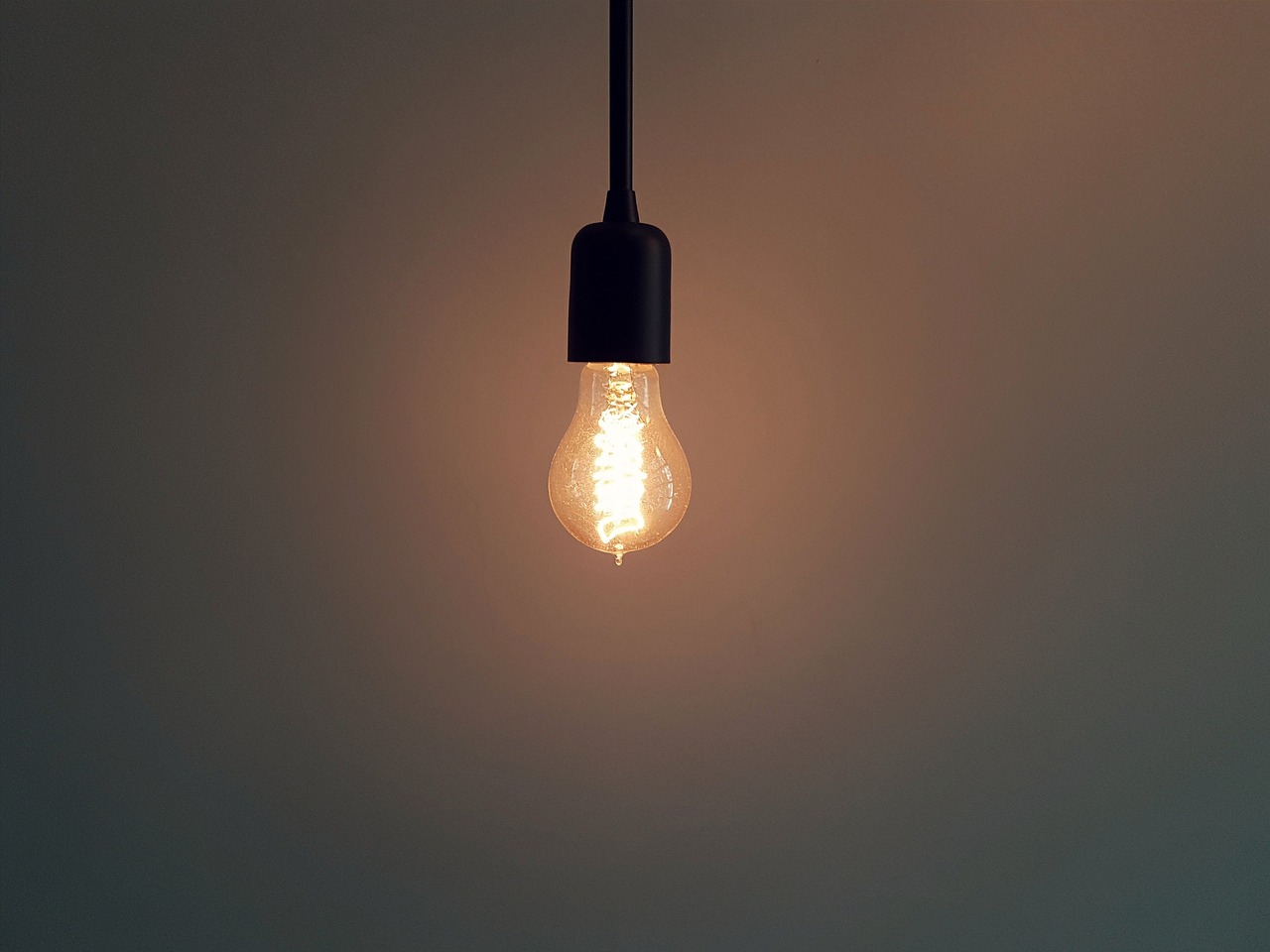
Smart Lighting Solutions
In today's fast-paced world, have become more than just a trend; they are a lifestyle choice that enhances convenience and efficiency in our homes. Imagine walking into a room and having the lights automatically adjust based on the time of day or your mood! Sounds like something out of a sci-fi movie, right? Well, with the right smart lighting setup, it can be your reality. Smart lamps not only elevate your decor but also offer a plethora of features that traditional lamps simply can't match.
One of the most appealing aspects of smart lighting is its customization options. You can control the brightness, color, and even the timing of your lamps through a smartphone app or voice commands. This means you can set the perfect ambiance for a romantic dinner, a movie night, or a lively gathering with friends. Imagine dimming the lights to a warm glow with just a simple voice command or a tap on your phone. Talk about making an entrance!
There are various types of smart bulbs and lamps available in the market today, each with unique features. For instance, some bulbs offer RGB color-changing capabilities, allowing you to switch between millions of colors to match your mood or occasion. Others come with built-in speakers, making them perfect for creating a party atmosphere. When selecting smart lighting solutions for your DIY lamp makeover, consider the following:
- Compatibility: Ensure that the smart bulbs you choose are compatible with your existing lamp fixtures.
- Control Options: Look for products that allow you to control them via smartphone apps, voice assistants, or even remote controls.
- Energy Efficiency: Opt for LED smart bulbs which consume less power and last longer than traditional incandescent bulbs.
Integrating smart technology into your DIY lamps is not just about aesthetics; it's also about energy efficiency and sustainability. Smart bulbs can significantly reduce your energy consumption, saving you money on your electricity bill while also being kinder to the environment. Many smart bulbs even have features that allow you to set schedules, so your lights only turn on when you need them, further optimizing your energy use.
Moreover, smart lighting can be a fantastic addition to your home security system. You can program your lamps to turn on and off at specific times, giving the illusion that someone is home, which can deter potential intruders. This feature is particularly useful when you’re away on vacation or at work, providing peace of mind that your home is being monitored.
In conclusion, incorporating into your DIY lamp projects not only enhances the visual appeal of your home but also adds layers of functionality and security. Whether you want to set the mood for a cozy night in or ensure your home is safe while you're away, smart lighting is the way to go. So, why not take your lamp makeover to the next level and embrace the future of lighting?
Q1: What are smart bulbs?
Smart bulbs are LED light bulbs that can be controlled remotely via a smartphone app or voice commands, allowing for customizable lighting options.
Q2: Do I need a special lamp for smart bulbs?
No, you can use smart bulbs in any standard lamp fixture as long as they are compatible with the bulb type.
Q3: Can smart lighting help save on energy bills?
Yes, smart lighting is generally more energy-efficient than traditional bulbs, and features like scheduling can help reduce unnecessary energy use.
Q4: How do I install smart lighting?
Installation is typically straightforward; simply replace your existing bulbs with smart bulbs and follow the manufacturer's instructions for setup via the app.
Frequently Asked Questions
- What materials do I need for a DIY lamp makeover?
To get started on your DIY lamp makeover, you'll need some basic materials. This typically includes paint (spray paint or acrylic), fabric for lampshades, brushes, a hot glue gun, and embellishments like ribbons or beads. Don't forget protective gear like gloves and a mask if you're working with spray paint!
- Can I upcycle any lamp?
Absolutely! Almost any lamp can be upcycled. Whether it's an old floor lamp, a table lamp, or even a vintage piece, you can breathe new life into it with some creativity. Just make sure it’s in good working condition before you start your project!
- What are the best paint techniques for lamps?
There are several fun paint techniques you can try! Spray painting is quick and gives a smooth finish, while stenciling can add intricate designs. You can also experiment with sponge painting for a textured look. Just remember to use paint that adheres well to the material of your lamp!
- How do I choose the right color scheme for my lamp?
Choosing the right color scheme can be as easy as looking around your room! Pick colors that complement your existing decor, or go for a bold contrast to make your lamp a statement piece. Use color wheels or online tools to help you visualize the perfect palette!
- What finishing touches should I consider?
Finishing touches can make all the difference! Consider applying a sealant to protect your paint or fabric. You might also want to add decorative elements like tassels or beads to give your lamp a unique flair. These small details can elevate your DIY project to a whole new level!
- What type of lighting options can I use with my DIY lamp?
When it comes to lighting options, you have plenty to choose from! LED bulbs are energy-efficient and long-lasting, while smart bulbs can add convenience with their adjustable brightness and color settings. Choose what fits your needs and enhances the ambiance of your space!
- Are energy-efficient bulbs worth it?
Definitely! Energy-efficient bulbs not only save you money on your electricity bill but also have a lower environmental impact. They last much longer than traditional bulbs, making them a smart choice for your DIY lamps!
- How can I integrate smart lighting into my DIY projects?
Integrating smart lighting into your DIY lamps is easier than you might think! You can purchase smart bulbs that fit into your existing lamp fixtures. Additionally, consider using smart plugs to control your lamps remotely or set schedules for when they turn on and off!



















